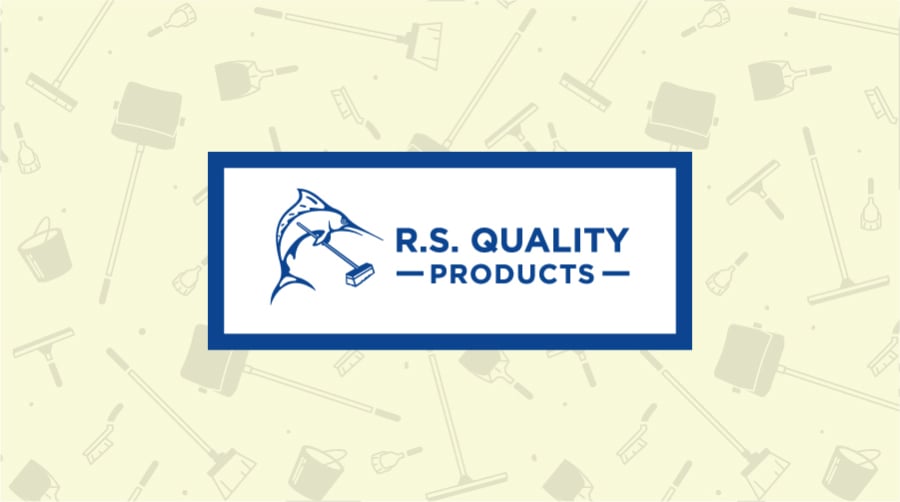Guide To Color-Coding By Shift Distinction
Written by Adam Serfas

Color-coding by shift is an approach that is commonly used in industrial settings or in environments such as food packaging where hygiene is important, but direct food handling is not a consideration. It is not generally recommended for explicit food manufacturing and processing settings as a color-coding by allergen or by zone approach is often better suited for ensuring the safety of the product. For those facilities that operate under an assembly-style production process, there is a color-coding plan meant for color-coding by assembly distinction that should be considered first.
As the name implies, this approach is best suited to those facilities that operate under shift changes and is fairly logical to implement. That said, there are considerations worth reviewing to ensure facility compatibility and long-term compliance.
Here’s a step-by-step guide to designing and implementing a successful color-coding plan for shift distinction.
STEP 1: DEFINE YOUR SHIFTS
The first and most critical step in creating your color-coding plan is to clearly define your shifts. This should be a fairly straightforward and instantaneous process as most facilities run no more than 2-4 shifts in a 24-hour cycle. If you’re running into issues nailing down distinct shifts, you need to stop at this step and evaluate whether or not your facility is operating under a true shift schedule as a rolling staffing schedule likely won’t benefit from this approach.
For those that operate under crew schedules–those that might have A teams, B teams, etc., that don’t necessarily work the same time every day of the week but always operate as a unit together—you’ll note each team in this step.
Pro Tip: Keep Things Simple
The key to determining steps is keeping things simple. Forcing a shift or a team designation that isn’t clearly distinct from others is a recipe for confusion later along the way. It’s common for those working on a color-coding plan to get carried away with this list. In practice, though, it’s actually easier to work from—and see success from—a shorter set of steps as a starting point for framing your plan.
One way you might approach this step is to imagine you’re given 30 seconds to give a high-level overview of the facility workflow from a personnel standpoint to someone who’s not familiar with the goings-on of the facility—maybe a trainee employee or perhaps someone who’s entirely removed from the industry. You’ll often find that answer, “Morning shift does X, Afternoon shift comes in and then does X….” or “A team works the morning shift MWF, and then works a long day on Saturday, B team works afternoons MWF…”
Pro Tip: Work With Schedulers & Plant Managers
Because this plan so directly ties to the operational schedule of a facility, it’s a great idea to work closely with those in charge of schedules and shift teams at this juncture and throughout the entirety of the planning phase.
STEP 2: NOTE YOUR BIGGEST CONCERNS
A color-coding plan, when implemented correctly, can often help address a wide range of common issues in facilities. Are you noticing tools breaking more often than they should? Are you noticing tools going missing—perhaps not being stored properly, perhaps leaving with employees? Are cleaning and hygiene standards not being met? Are employee expectations with regard to tool handling or cleaning procedures unclear?
Whatever concerns come to mind, jot them down at this step as they may be useful to you when you evaluate the effectiveness of your plan later on.
Pro Tip: Take a Step Back
Most often, the answer to this question can be found in your reasoning for looking to implement this kind of plan in the first place. Is something not running as it should? Is there room for improvement? Go from there and work with team leads, those in charge of purchasing tools, and anyone else who may be able to offer relevant insight into ongoing concerns.
STEP 3: EVALUATE NEEDS FOR EACH SHIFT / TEAM
For this next step, take stock of all of the physical things that are used over each shift or by each team that you might like to color-code. This might include cleaning tools, storage tools, product handling tools, wearables, and personal protective equipment.
The best way to develop this list is to work with purchasing managers and everyone that works with shifts or teams to review what they are currently using or hoping to use. It’s important to be extremely thorough with this step. If the staff is multilingual, be sure to include multilingual note-takers during this process.
Pro Tip: Note Your Functionality Wishes & Must-Haves
Take note of what works and what doesn’t with what’s currently being used. If there are certain features that make a tool or product great, jot that down. If there’s something specific that prevents an existing product or tool from functioning in the best way possible, note that as well.
STEP 4: CHOOSE YOUR COLORS
Naturally, many people assume this step would come first in a color-coding plan. It’s actually a best practice to move to this namesake step in a color-coding plan once you’ve carefully assessed all of your needs. Ideally, you want everything that’s an essential product or tool along the production line to be color-coded, and referencing your list of necessities will help you to identify which colors will allow you to meet all of those needs.
The most commonly used colors—and therefore the ones with the most product options—are blue, green, red, yellow, black, and white. Some tools also come in colors like pink, purple, lime green, orange, tan, brown, and gray. It’s important to consider whether your color selections meet your needs now—and potentially what you may need in the future.
Pro Tip: Consider Contrasting Colors
Utilizing contrasting colors can be helpful on a few fronts. It’s a great idea to use contrasting colors for back-to-back shifts and teams to help ensure tools are used when and where they are intended.
Pro Tip: Don’t Forget Colorblind Employees
There are several color combinations that are commonly confused by people who are colorblind. Red and green, green and brown, green and blue, blue and gray, blue and purple, green and grey, and green and black are the most commonly confused. It’s best to try to avoid these combinations in back-to-back shifts. Utilizing contrasting colors can be helpful on this front as well. Orange and purple, purple and yellow, or blue and yellow are good examples of colorblind-friendly pairs.
STEP 5: CONSIDER YOUR STORAGE NEEDS
Tool storage is an important component of any color-coding plan. Wall racks and shadowboards that are color-coded for each separate step helps to ensure your tools are hygienically stored in the right place every time following use by shift teams. Having a set storage location for each of your tools is known to make it easier for employees to remember and follow proper storage protocol. Additionally, hygienic storage helps to meet all of the goals associated with the 5S system in 5S facilities.
Pro Tip: Factor In Your Cleaning Needs
Whether tools are functionally used for cleaning or simply just need to be cleaned after use, there are things to consider on the cleaning use front when selecting tool storage. Shadowboards, in particular, can come in a variety of materials that can better accommodate different needs. Max Duty Aluminum shadowboards can resist chemicals, abrasions, and impacts. An Ultra Aluma-Lite™ shadowboard resists impacts, flexing, vandalism, corrosion, chemicals, abrasions, and is impervious to splashes and wash-downs. FB-X Accu-Shield shadowboards are chemical resistant and can withstand splashes and ammonia wash-downs.
STEP 6: DON’T SKIMP ON SIGNAGE
Signage that reminds employees of the color-coding plan is another essential component, so it’s important to remember as a budgetary line item. Best practices for color-coding signage are to make sure signage is easily read and highly visible, colorblind-friendly, and available in multiple languages if applicable to multilingual teams.
Pro Tip: Take Advantage Of Customization Options
Creating custom signage gives facilities the opportunity to tailor the signs to the plan’s needs, to the material that is best suited for the environment, and even offers the option to align the overall design with a company’s brand guidelines. If you need a sign to be waterproof, glow in the dark and multilingual, that’s possible!
Pro Tip: Consider All The Possible Locations
You should also consider adding signage not only to the walls, but in other places where it might be helpful as well. For instance, in some cases, floor stickers can helpful reminders for the color-coding plan. Some plants will also choose to color-code or attach on additional cards to individual employee ID badges as well so the plan is easily accessible at all times. Asking yoru supplier about signage solutions they’ve offered in the past for other customers can help you identify opportunities you may not have thought of.
STEP 6: TRAIN ON & EVALUATE THE PLAN REGULARLY
A color-coding plan is a key operational component of a facility and should be incorporated into the company culture as much as possible—as both an expectation and something employees can feel good about being a part of. Training on the color-coding plan is an ongoing and essential step in this process. It should be done regularly with existing employees and as new employees join the team. It’s also important to evaluate the plan regularly to see what’s working well and what isn’t to consider potential changes. Allowing employees to offer any feedback along the way is a great way to encourage employee buy-in. A color-coding plan is always more likely to be followed by those who feel invested in the process, so it’s essential to invite collaboration and comment.
Pro Tip: Work With HR
Your HR team can help to establish the importance of a color-coding plan from the jump in interviews and during the hiring process. Communicating the importance of the plan early on is a great way to establish its significance as it relates to each and every team member.
HR can also be a great resource for keeping tabs on new employees who require training and on language needs for multicultural teams to accommodate in training sessions and on signage.


